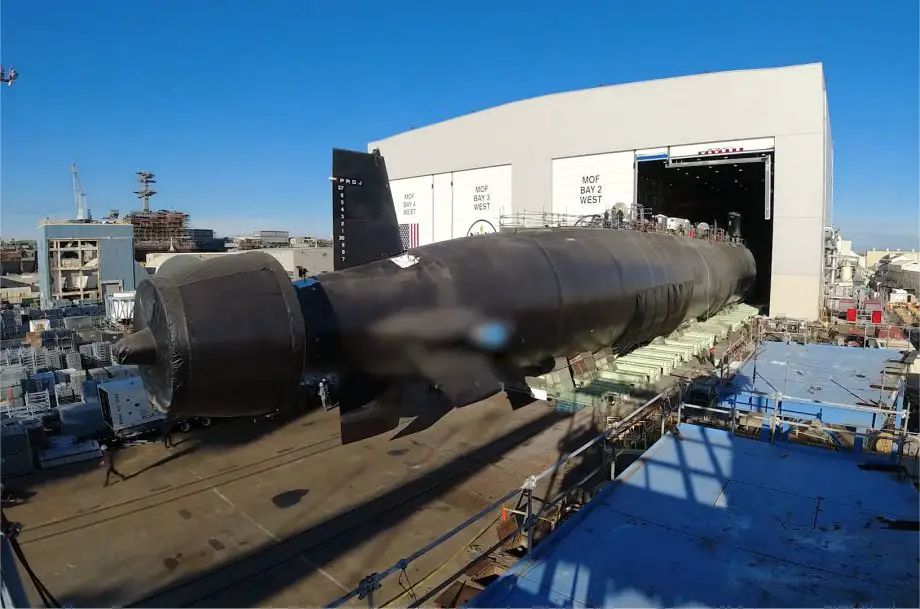Breaking news
Huntington Ingalls Industries launches Virginia class Block IV submarine USS Massachusetts.
According to a PR published by Huntington Ingalls Industries on February 23, 2024, the Virginia-class submarine named Massachusetts (SSN 798) was launched at Newport News Shipbuilding, a division of HII.
Follow Navy Recognition on Google News at this link
 Virginia class Block IV submarine USS Massachusetts. (Picture source: HII)
Virginia class Block IV submarine USS Massachusetts. (Picture source: HII)
The submarine's transition from the construction facility to the water was accomplished by transferring it to a floating dry dock, followed by submersion and towing to the shipyard's submarine pier for further outfitting, testing, and crew certification. The launch of the Massachusetts, following its christening in May, marks a significant step in its journey towards becoming an operational part of the U.S. Navy's fleet.
Virginia-class submarines, nuclear-powered fast attack vessels, are designed to perform a wide range of missions in both deep ocean and shallow littoral waters. These submarines are intended to replace the aging Los Angeles-class submarines, incorporating advanced technologies to improve their warfighting capabilities, including enhanced firepower, maneuverability, and stealth.
Capable of exceeding speeds of 25 knots, they support various mission profiles. The Massachusetts represents the 25th submarine of the Virginia class, with Newport News Shipbuilding being responsible for the delivery of 12 of these vessels.
Specifications for the Virginia-class submarines include a displacement of 7,800 tons, a length of 377 feet, a beam of 34 feet, and a draft of 32 feet. They are powered by an S9G reactor and auxiliary diesel engine, can remain submerged for up to three months, have a test depth of over 800 feet, and can accommodate 15 officers and 120 enlisted personnel. Their armament consists of 12 vertical launch system tubes and four 21-inch torpedo tubes for Mk-48 torpedoes and BGM-109 Tomahawk missiles.
The Virginia class has been at the forefront of adopting new technologies and construction techniques to reduce costs and improve efficiency. The use of "commercial off-the-shelf" (COTS) components, particularly in computer and data networks, has helped in cutting production costs.
Additionally, an innovative industrial arrangement between the two shipbuilders, General Dynamics Electric Boat and Huntington Ingalls Industries, has enabled the sharing of construction responsibilities, further optimizing the production process.


























